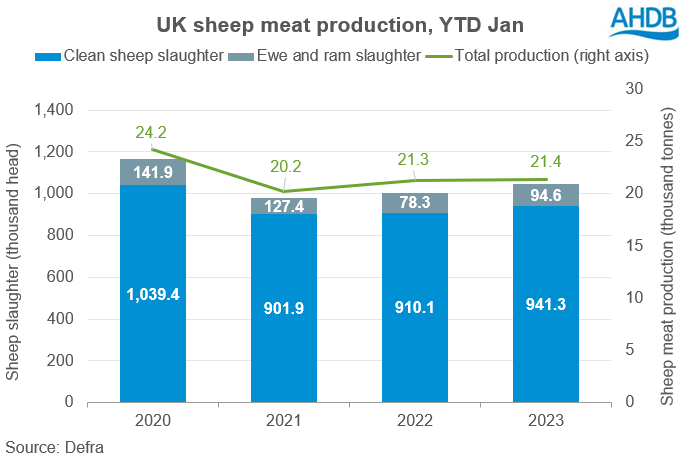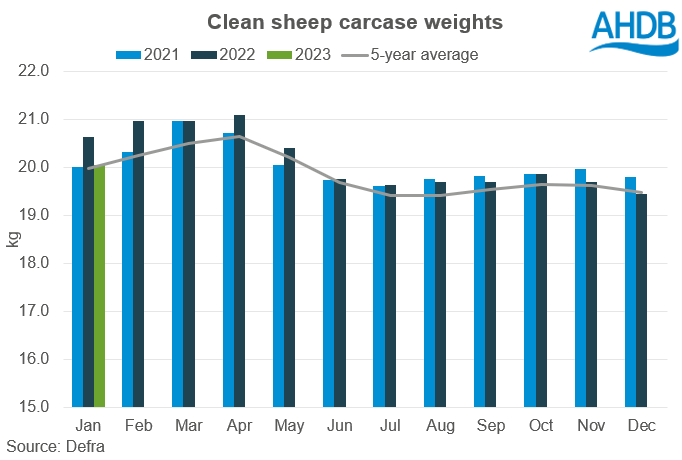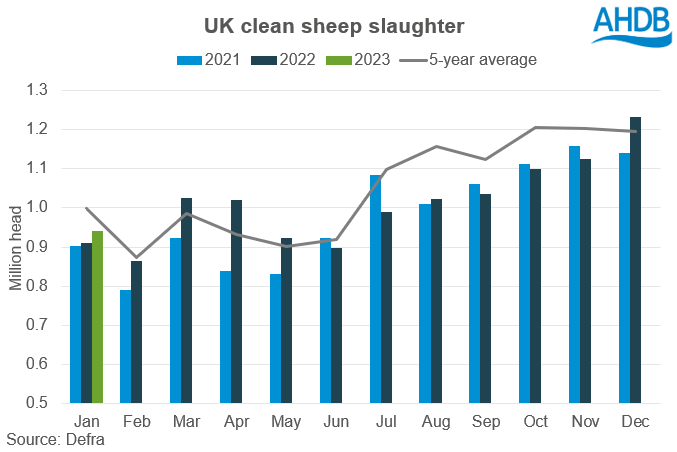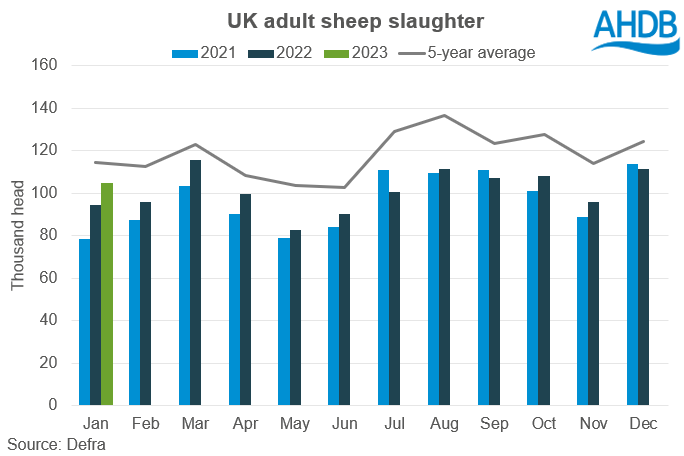Higher sheep throughputs drive year-on-year production rises in January
Friday, 24 February 2023
Last Thursday Defra released their latest figures for UK sheep meat production, with production totalling 21,400 tonnes in January. This was a 19.7% decline (-5,200 tonnes) from December figures. Production typically falls when moving into the new year, as supply and demand ease after the festive period. Year-on-year, production was up slightly by 0.5% (100 tonnes).
Clean sheep carcase weights averaged 20.1kg in January, also following seasonal movements, increasing by 3.1% (0.6kg) on December’s average. However, compared to January 2022, average carcase weights were down 2.8% (-0.6kg). This follows the trend seen in the second half of last year. Adult sheep carcase weights also followed this trend, at 23.9kg, up 0.8% (0.2kg) on December’s figure but down 10.0% (-2.6kg) on the same month last year. The year-on-year decline may be explained by several factors. Increased input costs and dry conditions last year hampered winter forage production and cover crop establishment, while high feed prices have likely added pressure on supplementary feeding for many.
With carcase weights down versus a year ago, the annual increase in production resulted from increased throughputs in January. Both clean and adult sheep kill throughputs increased on year earlier levels, totalling 941,300 head (up 3.4%) and 105,000 head (up 10.9%) respectively in January. However as expected, throughputs saw month-on-month declines, with clean sheep kill down 23.6% (-291,200 head) and adult sheep kill down 5.8% (-6,500 head)*.
The increase in throughputs in January compared to year earlier levels follows our expectation of a higher carry-over of lambs into 2023. This resulted from lower lamb kill than usual in H2 2022, with pressure from drought on forage and feed production, and higher feed costs slowing lamb development. For a more detailed view of lamb production going forward, take a look at our 2023 lamb market outlook.
*Please note AHDB has queried Defra’s published slaughter numbers and continues to work with industry and Defra to resolve issues arising from the data set.
Sign up for regular updates
You can subscribe to receive Beef and Lamb market news straight to your inbox. Simply fill in your contact details on our online form.
While AHDB seeks to ensure that the information contained on this webpage is accurate at the time of publication, no warranty is given in respect of the information and data provided. You are responsible for how you use the information. To the maximum extent permitted by law, AHDB accepts no liability for loss, damage or injury howsoever caused or suffered (including that caused by negligence) directly or indirectly in relation to the information or data provided in this publication.
All intellectual property rights in the information and data on this webpage belong to or are licensed by AHDB. You are authorised to use such information for your internal business purposes only and you must not provide this information to any other third parties, including further publication of the information, or for commercial gain in any way whatsoever without the prior written permission of AHDB for each third party disclosure, publication or commercial arrangement. For more information, please see our Terms of Use and Privacy Notice or contact the Director of Corporate Affairs at info@ahdb.org.uk © Agriculture and Horticulture Development Board. All rights reserved.





